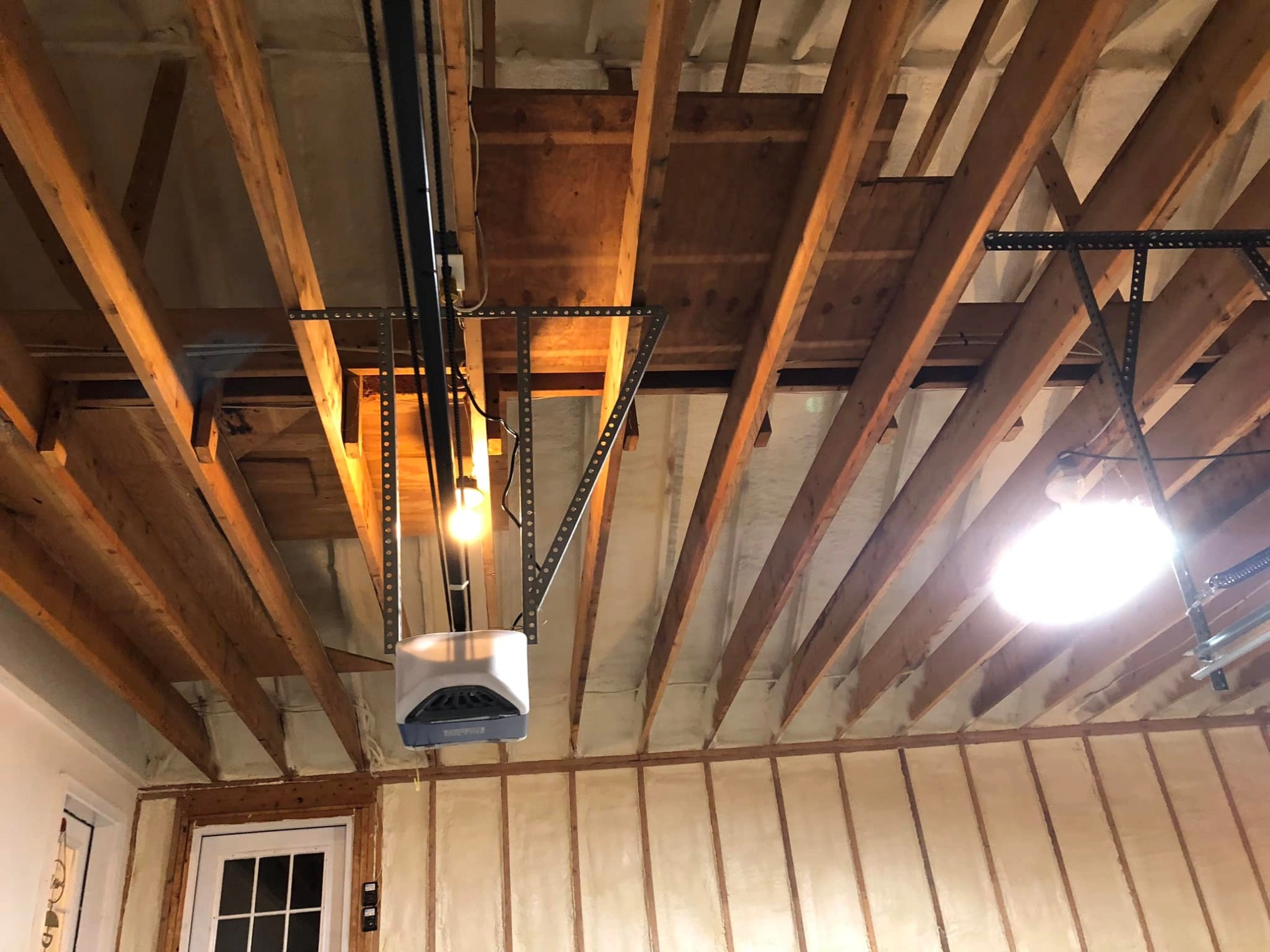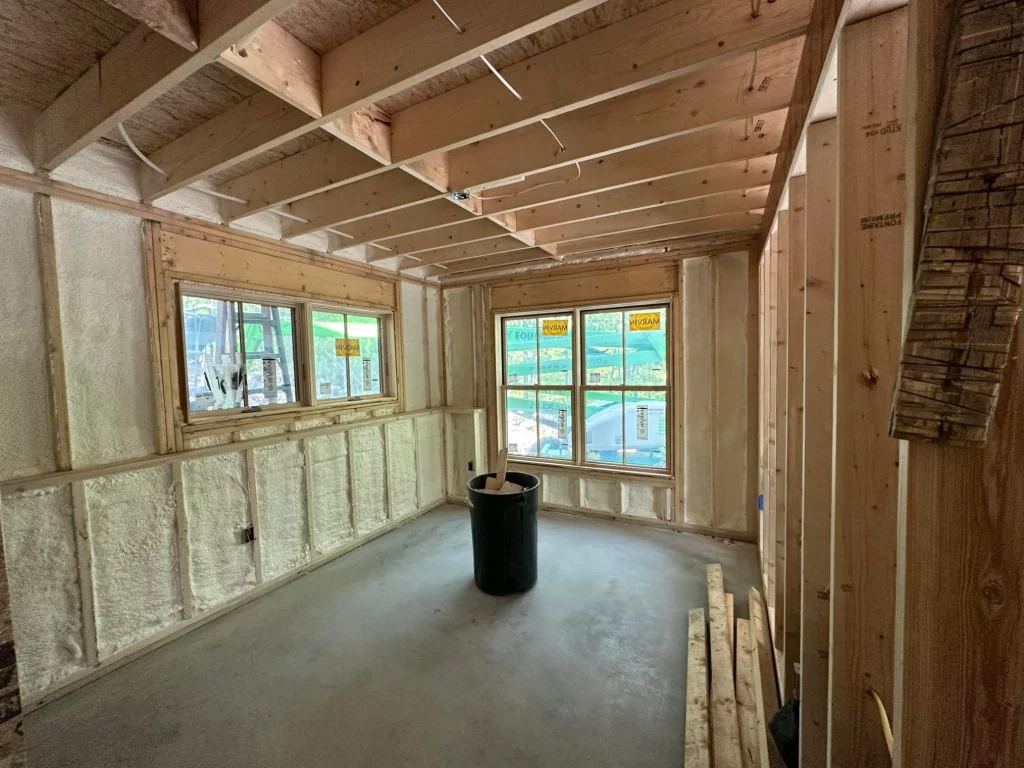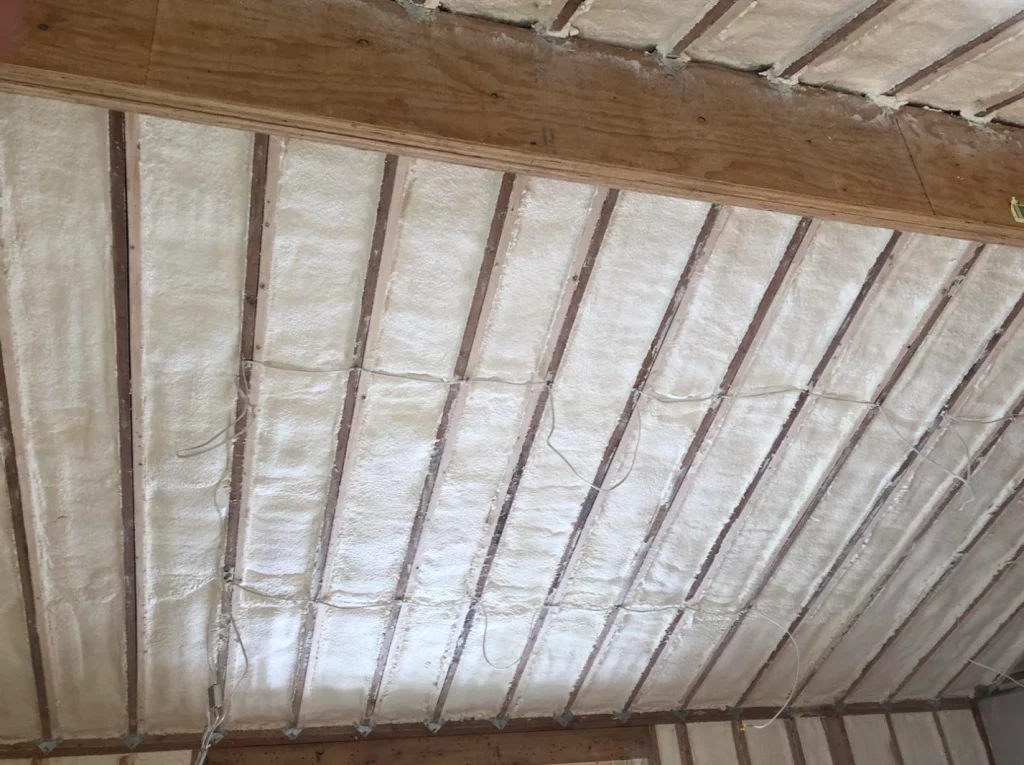
You might be building a new home, renovating an old one, or just looking to cut down on energy bills. In any case, insulation plays a big role in how comfortable and efficient your space feels. Spray foam insulation stands out because it seals air leaks better than many options, which can lead to lower heating and cooling costs. But what about its effects on the environment? That’s where things get interesting. This guide dives into the environmental impact of spray foam insulation, focusing on its sustainability and green benefits. You’ll see how it stacks up in terms of energy savings, material use, and long-term planetary health.
Spray foam insulation involves a chemical reaction that expands into a foam, filling cracks and creating an airtight barrier. It comes in open-cell and closed-cell varieties, each with unique properties. While installation requires care due to the chemicals involved, the end result often pays off in reduced energy use. Why does this matter? Buildings account for nearly 40% of global energy consumption and a similar share of greenhouse gas emissions, according to data from the International Energy Agency. Choosing the right insulation can help lower that footprint.
Over the years, professionals in the insulation field have seen firsthand how spray foam transforms homes into more efficient spaces. Drawing from that practical experience, this guide provides a clear understanding of its environmental aspects. You’ll learn the basics of how spray foam works, its positive environmental effects like cutting carbon emissions, and ways to address any concerns. Expect details on sustainable production practices, comparisons with other materials, and tips for making eco-friendly choices.
Here’s what you’ll find ahead:
By the end, you’ll have the knowledge to decide if spray foam fits your green goals. Let’s get started.
Spray foam insulation starts as two liquid components that mix and expand on contact with air. This process creates a foam that adheres to surfaces, forming a continuous layer. Unlike traditional fiberglass or cellulose, it doesn’t settle or sag over time.
Open-cell foam is softer and absorbs sound well, while closed-cell is denser and offers better moisture resistance. Both types expand to about 30 to 100 times its liquid volume, depending on the formula. This expansion means less material is needed to cover large areas, which ties into sustainability by reducing waste.
Why focus on the environment here? Spray foam’s high R-value, a measure of thermal resistance, means it performs more with less thickness. For example, closed-cell foam can achieve an R-value of 6 to 7 per inch, compared to fiberglass batts at around 3.1 per inch. That efficiency translates to less energy for heating and cooling your home.
But it’s not all straightforward. The chemicals, primarily polyurethanes, come from petroleum-based sources. Production can involve blowing agents that, if not handled right, contribute to ozone depletion. Modern formulations have shifted to hydrofluoroolefins (HFOs), which have lower global warming potential.
To grasp the full impact, consider the lifecycle: from manufacturing to disposal. Studies show that energy savings over a building’s life often outweigh initial environmental costs.
One of the strongest cases for spray foam lies in its ability to reduce energy use. Homes with proper insulation lose less heat in winter and stay cooler in summer. The U.S. Department of Energy estimates that sealing air leaks can cut heating and cooling costs by up to 20%. With spray foam’s superior air sealing, those savings climb higher.
Take carbon emissions. Residential buildings in the U.S. produce about 300 million metric tons of CO2 annually from energy use. Switching to efficient insulation like spray foam could prevent a significant portion of that. A report from Green Building Advisor highlights how spray foam in attics alone can reduce emissions equivalent to taking a car off the road for a year in a typical home.
Sustainability extends to resource conservation. Spray foam uses fewer raw materials per square foot than bulkier insulations. Its longevity—lasting 25 to 80 years without degrading—means you avoid frequent replacements, cutting down on manufacturing demands and landfill waste.
Water efficiency factors in too. Closed-cell foam repels moisture, preventing mold growth that could require energy-intensive remediation. In humid climates, this keeps indoor air quality high without extra dehumidifiers.
Market data backs this up. The global spray foam insulation market reached $8.5 billion in 2022, driven partly by green building incentives, per a study by Grand View Research. Another stat: Energy-efficient homes with spray foam can save homeowners $500 to $1,200 yearly on utilities, according to the Insulation Institute.
Key Takeaways:
Expert Tip: If you’re in a cold climate, opt for closed-cell foam in basements. It blocks vapor and keeps foundations dry, avoiding costly repairs that burn extra energy.

No material is perfect, and spray foam has faced criticism for its chemical components. Traditional blowing agents like hydrofluorocarbons (HFCs) have high global warming potential. However, the industry has moved toward HFOs, which break down faster in the atmosphere.
Installation poses risks if not done by certified pros. Off-gassing during curing can release volatile organic compounds (VOCs), affecting indoor air. Proper ventilation and low-VOC formulas address this. The EPA sets guidelines to ensure safe application, reducing health and environmental hazards.
Production relies on fossil fuels for polyurethane, but bio-based alternatives are emerging. For instance, companies now use soy or castor oil derivatives in some foams, cutting petroleum use by up to 20%.
Disposal is another point. Spray foam isn’t easily recyclable, but its durability means less ends up in landfills. Demolition waste can be landfilled safely since it doesn’t leach toxins.
To mitigate, choose products with third-party certifications. Look for Greenguard Gold, which tests for low emissions. Data from the SPF Health and Safety Association shows certified installations lower VOC exposure by 90% compared to older methods.
Here’s a quick comparison table of environmental impacts:
| Insulation Type | Energy Savings Potential | Material Sustainability | Installation Emissions | Lifespan |
|---|---|---|---|---|
| Spray Foam | High (R-6+ per inch) | Moderate (improving) | Low with HFOs | 25-80 years |
| Fiberglass | Medium (R-3 per inch) | High (recyclable) | Very Low | 20-50 years |
| Cellulose | High (R-3.5 per inch) | High (recycled paper) | Low | 30+ years |
Expert Tip: Before installation, ask contractors about their HFO use and certification. This ensures you’re getting the greenest option available.
Beyond these environmental aspects, common challenges include upfront costs, which run $1 to $3 per square foot. Yet, payback through energy savings happens in 3 to 5 years, per Energy Star. Overcome this by factoring in rebates from programs like the Inflation Reduction Act, which offer up to 30% tax credits for efficient upgrades.
The push for greener spray foam starts at the factory. Manufacturers now prioritize renewable feedstocks. For example, some foams incorporate recycled plastics or plant-based polyols, reducing reliance on virgin oil.
A 2023 market report from MarketsandMarkets notes that sustainable spray foam variants grew 12% year-over-year, reflecting demand for eco-friendly building materials. Certifications like ISO 14001 guide production to minimize water use and emissions.
Sourcing matters too. Ethical suppliers track their supply chain to avoid deforestation-linked materials. Bio-based options can lower the carbon footprint of production by 15-25%, according to research from the Polyurethane Foam Association.
You can support this by selecting products labeled with content from sustainable sources. This choice ripples out, encouraging broader industry shifts.
When weighing options, context is key. Spray foam excels in irregular spaces where batts leave gaps. But for flat walls, blown-in cellulose might match it environmentally while costing less.
Pros of spray foam: Superior sealing, high insulation value, moisture resistance. Cons: Higher initial cost, chemical sensitivity during install.
Cellulose, made from recycled newsprint, boasts a low embodied energy— the total energy to produce it. Yet, it settles over time, reducing effectiveness. Fiberglass is cheap and recyclable but irritates skin during handling and doesn’t seal air as well.
Market data: In 2022, spray foam captured 25% of the U.S. insulation market, up from 18% in 2018, thanks to its performance edge, per Statista.
To decide, calculate your home’s needs. Tools from the DOE help estimate savings.
Key Takeaways:
Expert Tip: For retrofits in older homes, spray foam fills voids left by previous insulation, maximizing efficiency without full removal.
Start with an energy audit to pinpoint leaks. Professionals use blower door tests to measure air changes per hour. Aim for under 3 ACH50 for tight construction.
Choose certified installers trained in low-emission techniques. They wear protective gear and ventilate spaces during curing, which takes 24-48 hours.
Layering works well: Use spray foam for sealing, then add recycled-content batts for extra R-value. This hybrid approach balances cost and performance.
Maintenance is minimal. Inspect annually for damage from pests or settling. Clean with mild soap if needed, avoiding harsh chemicals.
Future trends point to water-blown foams, which replace chemical agents entirely, further slashing environmental impact. Research from Oak Ridge National Laboratory explores these, predicting wider adoption by 2030.
Another trend: Smart foams with embedded sensors to monitor performance. This tech could optimize energy use in real-time.

Track energy bills pre- and post-installation. Expect 10-30% drops in usage. Use apps like those from Nest to monitor trends.
For ROI, factor in incentives. The average payback for spray foam is 4 years, with lifetime savings exceeding $10,000 in many cases.
Environmentally, calculate your carbon offset. Online calculators from the EPA convert kWh saved to trees planted or cars avoided.
Expert Tip: Document everything for tax credits. Keep receipts and audits to claim deductions easily.
Most spray foam isn’t recyclable at curbside, but advancements allow some to be ground up for filler in new products. Its long life reduces replacement needs, indirectly supporting sustainability.
Modern low-VOC formulas minimize off-gassing, especially after curing. Certified products meet strict emission standards, keeping indoor air safe.
Sheep’s wool is renewable but more expensive and less effective in damp areas. Spray foam wins on sealing but pairs well with natural layers for hybrid green setups.
Yes, it contributes to energy efficiency points in LEED. Choose HFO-based types to meet material credits for low environmental impact.
It varies, but bio-based versions lower it significantly. Lifecycle analyses show energy savings offset production emissions within 1-2 years of use.
It works everywhere but shines in extreme weather. Closed-cell handles moisture in wet areas; open-cell suits dry, sound-sensitive spaces.
You’ve now got a solid grasp of spray foam’s environmental role—from energy savings that cut emissions to sustainable practices that preserve resources. Key points include its air-sealing power, which lowers utility bills and your carbon footprint, and the shift to greener materials that address past concerns. Use this guide as your reference: Assess your home’s needs, pick certified products, and pair with audits for best results. You’re equipped to make choices that benefit both your wallet and the planet. Start small, like insulating the attic, and build from there.
For personalized advice on installing spray foam insulation with sustainability in mind, contact Lamothe Spray Foam Insulation. Reach us at [email protected] or call (508) 847-0119. Our team offers consultations to help you achieve green, efficient results tailored to your project. (72 words)